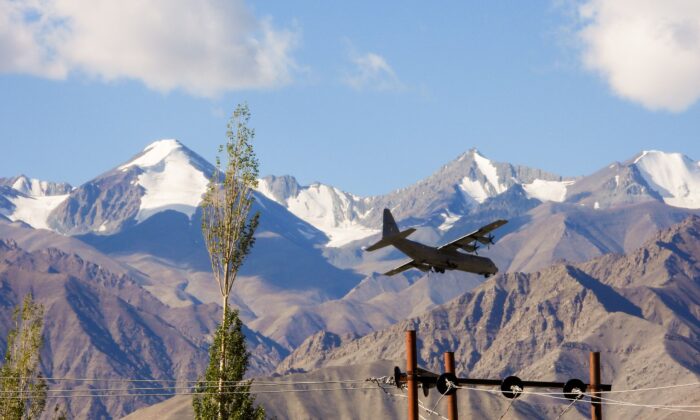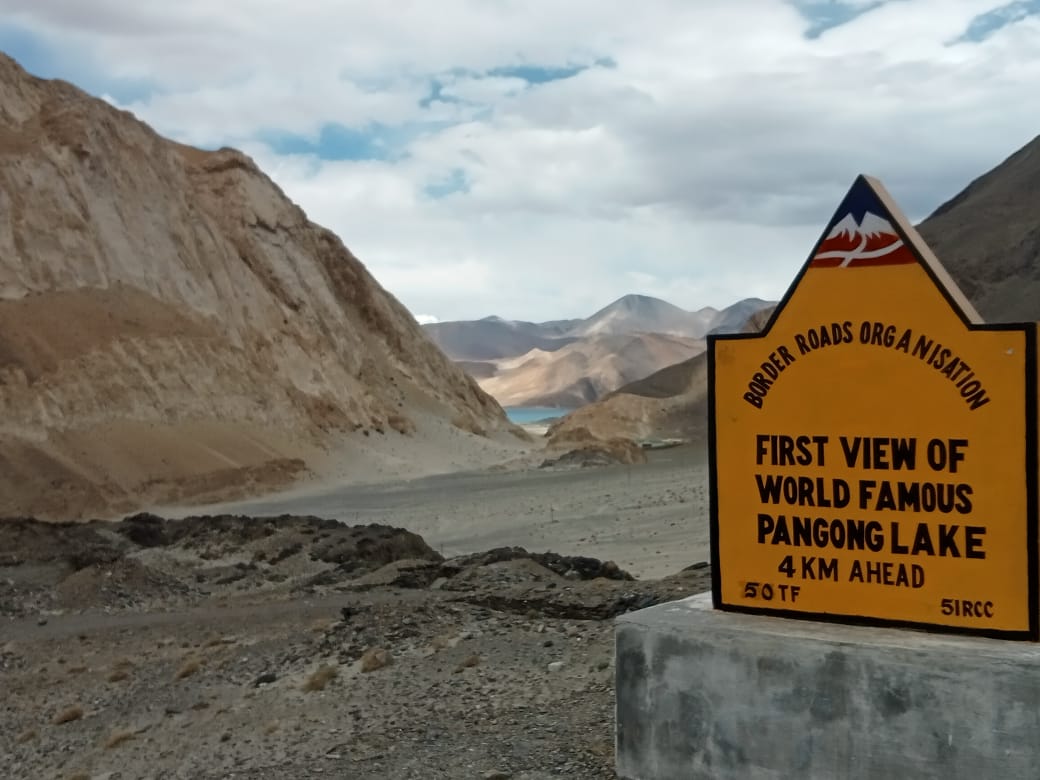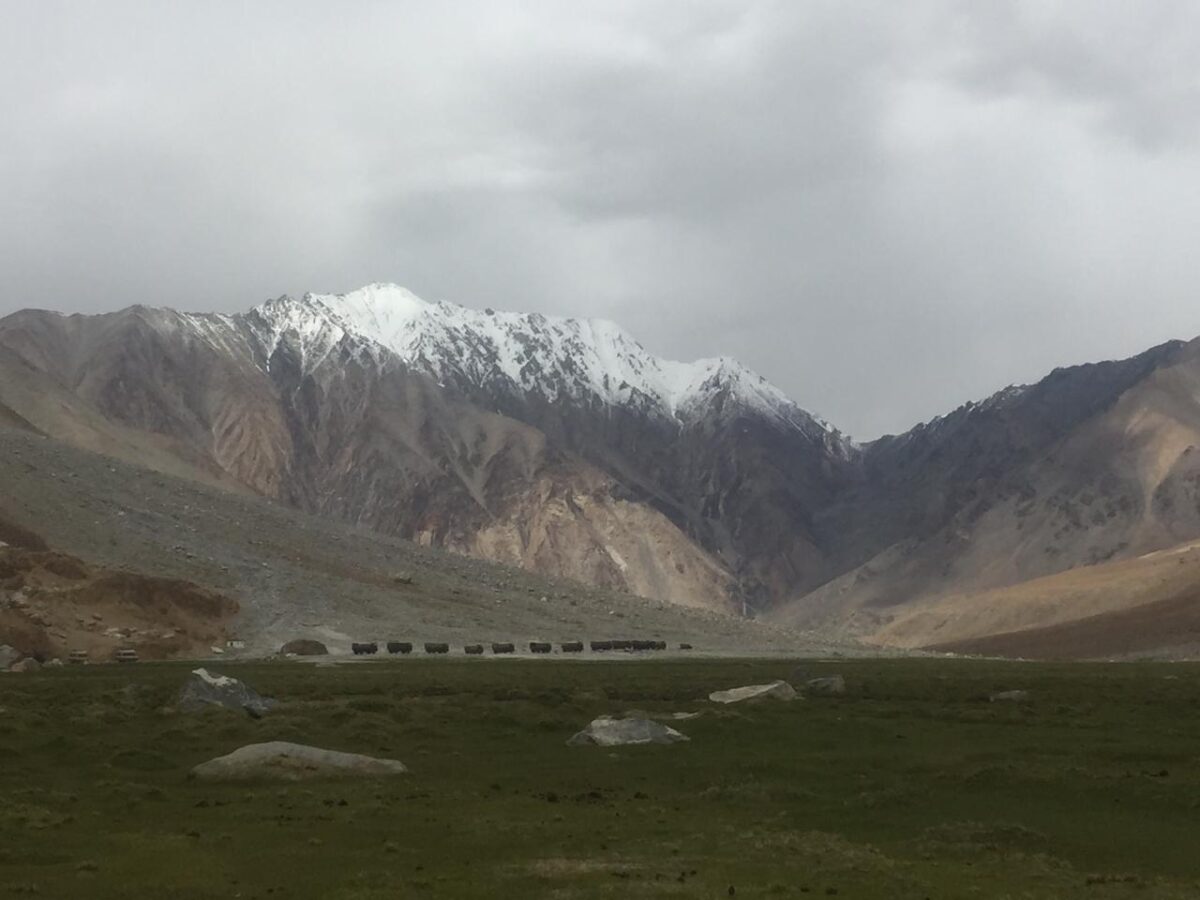
An Indian Air Force Hercules military transport plane prepares to land at an airbase in Leh, the joint capital of the union territory of Ladakh bordering China, on September 8, 2020. (Mohd Arhaan Archer/AFP via Getty Images)
By
NEW DELHI–U.S. Army Pacific Commanding General Charles Flynn has raised concerns about the build-up of Chinese defence infrastructure on the India-China border during a recent visit to India.
“I believe that the activity level is eye-opening and some of the infrastructure that is being created in the [Chinese Army’s] western theatre command is alarming,” Flynn told journalists in New Dehli after holding talks with Indian Army Chief General Manoj Pande on June 8.
“One must ask ‘why does China’s military need such arsenal in all domains.’”
India and China have been involved in multiple stand-offs for 18 months on the disputed border in the eastern Ladakh region after the bloody Galwan conflict of June 2020, which claimed the lives of 20 Indian soldiers.
The Chinese regime’s military, the People’s Liberation Army (PLA), is building its second bridge connecting the north and the south banks of the Pangong Tso lake, according to recent satellite images. Two-thirds of the lake is under China’s control and the bridge is built on a territory controlled by China but also claimed by India.
The PLA is also building a new jetty at a strategic location of the lake and further building roads connecting the lake to G219, a national highway that connects the western regions of Tibet and Xinjiang.

The first view of the Pangong Tso lake, the point from where the strategic lake starts in India and goes 134 kilometers, more than half of which is in China where it ends. The lake has been a site of heavy military built-up on both sides. This picture was taken on June 22, 2021, a few miles away from the first tourist camp point. (Venus Upadhayaya/Epoch Times)
Abhishek Darbey, a fellow at the New Delhi-based Centre for China Analysis and Strategy told The Epoch Times that the PLA is also building air force infrastructure including multiple airbases, heliports. China’s air force continues to be deployed at three air bases that face eastern Ladakh. From one of these bases, the straight line air distance to New Delhi is less than 249 miles, requiring just 15 minutes for a Chinese military plane to reach India’s capital.
Experts said Flynn’s statement sends a strong message to China.
“These welcome remarks signal a policy by successive U.S. civilian and military officials to signal their continued support to India vis-a-vis Chinese aggression along the border,” said Aparna Pande, research fellow and director of Washington-based Hudson Institute’s Initiative on the Future of India and South Asia.
Indian media reports that the Indian and the U.S. armies are scheduled to conduct an exercise called “Yudh Adhyas” at an altitude of 9000 to 10,000 feet in the Himalayas in October to further enhance military interoperability.
Flynn called the U.S.-India ties as a “counterweight to the corruptive behaviour of the Chinese” and said that the activities of the Chinese Communist Party in the Indo-Pacific are “destabilizing and corrosive.”
He added that Washington is also willing to provide India or co-develop cutting-edge military technologies with New Dehli.
Darbey said that the PLA has focused on building military and air force infrastructure on the India-China disputed border in a way that makes it hard for the United States and satellites to detect. The PLA is much better equipped in terms of shelters, road connectivity and acclimatization compared to last year, he added.

A row of army trucks on the high mountain roads of Ladakh enroute from Leh city to Pangong Tso lake on June 22, 2021. (Venus Upadhayaya/Epoch Times)
Chinese foreign ministry spokesperson Zhao Lijian criticized Flynn’s statements on June 9, calling it an attempt to “add fuel to fire” between India and China.
Pande said the Chinese regime has always interfered in other country’s disputes, such ass by issuing statements during India-Pakistan conflicts, but it doesn’t like it when countries speak out about issues that concern China.
“China wants an India that is nonaligned rather than an India that is closely aligned with the U.S. If India has American and allied support it will be better able to stand up to China’s demands and will pushback against Chinese aggression,” said Pande.